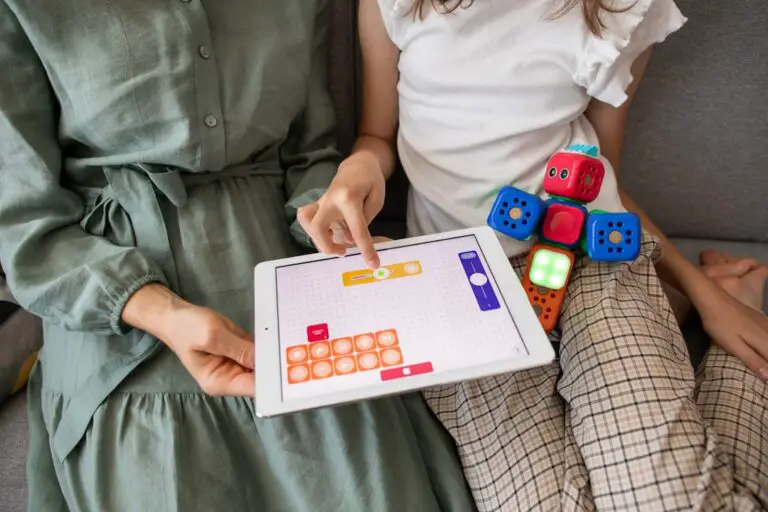Support our educational content for free when you purchase through links on our site. Learn more
[2023] How to Design a Robot for Beginners: A Comprehensive Guide
Are you a beginner in the world of robotics and eager to learn how to design your own robot? Look no further! Our team at Robot Instructions™ is here to provide you with a comprehensive guide on how to design a robot for beginners. From understanding the basics to assembling and programming your robot, we’ve got you covered. So let’s dive right in and embark on this exciting journey together!
Table of Contents
- Quick Answer
- Quick Tips and Facts
- What Is a Robot?
- Robotics for Beginners: How to Build a Robot
- Assembling Your Robot: Step-By-Step Guide
- Programming Your Robot
- FAQ
- Conclusion
- Useful Links
- Reference Links
Quick Answer
Designing a robot as a beginner involves understanding the basic components and principles of robotics, selecting the right materials and tools, and following a step-by-step process for assembly and programming. It’s important to start with simple projects and gradually increase the complexity as you gain more experience. Check out the Robot Kits category on Amazon for a wide range of beginner-friendly robot kits.
Quick Tips and Facts
- Robotics is an interdisciplinary field that combines elements of mechanical engineering, electrical engineering, and computer science.
- Designing a robot requires knowledge of basic electronics, programming languages, and mechanical design principles.
- Start with simple projects and gradually increase the complexity as you gain more experience.
- Join online communities and forums to connect with other robotics enthusiasts and learn from their experiences.
- Experimentation and trial-and-error are key to learning and improving your robot design skills.
What Is a Robot?
Before diving into the process of designing a robot, let’s first understand what a robot actually is. A robot is a machine that is capable of carrying out tasks autonomously or semi-autonomously. It can be programmed to perform specific actions or respond to its environment using sensors and actuators. Robots can be found in various domains, including manufacturing, healthcare, exploration, and entertainment.
Robotics for Beginners: How to Build a Robot
Now that we have a basic understanding of what a robot is, let’s explore the process of building one. As a beginner, it’s important to start with simple projects that allow you to grasp the fundamentals of robotics. Here are the key steps to follow:
- Define your project: Determine the purpose and functionality of your robot. Are you building a robot for educational purposes, for a specific task, or just for fun? This will help guide your design choices.
- Research and gather materials: Familiarize yourself with the different components required for your robot. This may include microcontrollers, sensors, motors, wheels, and other mechanical parts. Check out the Robot Parts category on Amazon for a wide selection of components.
- Learn basic electronics: Understanding the basics of electronics is crucial for designing and building robots. Learn about circuits, breadboarding, and soldering. Online tutorials and educational resources can be a great help in this regard.
- Choose a microcontroller: A microcontroller is the brain of your robot. Arduino and Raspberry Pi are popular choices for beginners due to their ease of use and vast online community support. Choose a microcontroller that suits your project requirements.
- Learn a programming language: Programming is essential for controlling and instructing your robot. Python and C++ are commonly used languages in robotics. Start with the basics and gradually learn more advanced concepts as you progress.
- Design the mechanical structure: Sketch out the physical structure of your robot. Consider factors such as stability, mobility, and ease of assembly. You can use CAD software or even pen and paper to create your design.
- Assemble the robot: Gather all the components and start assembling your robot according to your design. Follow the manufacturer’s instructions and take your time to ensure everything is connected correctly.
- Test and troubleshoot: Once your robot is assembled, test each component and ensure they are functioning as intended. Troubleshoot any issues that arise and make necessary adjustments.
Assembling Your Robot: Step-By-Step Guide
Assembling a robot can be an exciting yet challenging process. To help you navigate through it, here is a step-by-step guide:
- Prepare your workspace: Set up a clean and organized workspace with all the necessary tools and materials within reach.
- Follow the instructions: Carefully read and follow the instructions provided with your robot kit or components. Pay attention to details such as screw sizes and orientations.
- Start with the base: Begin by assembling the base of your robot. This is the foundation that holds all the other components together.
- Install the motors and wheels: Attach the motors and wheels to the base. Ensure they are securely fastened and aligned properly.
- Connect the microcontroller: Install the microcontroller and connect it to the necessary components, such as sensors and actuators. Follow the wiring diagrams provided with your kit.
- Add sensors and actuators: Depending on your project, add sensors and actuators to your robot. This may include distance sensors, light sensors, or servo motors.
- Power up the robot: Connect the power source, whether it’s batteries or a power supply, to your robot. Double-check the polarity and make sure everything is properly connected.
- Upload the code: Write or download the code for your robot and upload it to the microcontroller. Test the functionality of your robot and make any necessary adjustments.
Programming Your Robot
Once your robot is assembled, it’s time to program it to perform the desired tasks. Here are some key points to consider when programming your robot:
- Choose the right programming language: Select a programming language that is compatible with your microcontroller and suits your project requirements. Python and C++ are popular choices for robotics.
- Break down the tasks: Divide the desired tasks into smaller, manageable parts. This will make the programming process more organized and easier to debug.
- Utilize libraries and frameworks: Take advantage of existing libraries and frameworks to simplify your programming tasks. These resources can provide pre-written code for common functionalities, saving you time and effort.
- Test and iterate: Test your code on the robot and observe its behavior. Debug any issues that arise and make necessary adjustments to improve the performance.
- Learn from examples and online resources: Online communities and forums are a treasure trove of resources for beginner robot designers. Learn from others’ experiences, share your own progress, and ask for help when needed.
FAQ
How to build a robot for beginners?
Building a robot as a beginner requires understanding the basics of robotics, selecting the right components, and following a step-by-step process. Here are some key steps to get started:
- Define your project and purpose.
- Research and gather the necessary materials.
- Learn basic electronics and choose a microcontroller.
- Learn a programming language suitable for robotics.
- Design the mechanical structure of your robot.
- Assemble the robot following the instructions provided.
- Test and troubleshoot any issues that arise.
How to make a simple robot step-by-step?
To make a simple robot step-by-step, follow these general steps:
- Define the purpose and functionality of your robot.
- Gather the necessary components and materials.
- Assemble the mechanical structure of your robot.
- Connect the microcontroller and other electronic components.
- Write or download the code for your robot.
- Test and refine the functionality of your robot.
How do people design robots?
People design robots by following a systematic process that involves understanding the purpose and requirements of the robot, selecting the right components, designing the mechanical structure, and programming the robot to perform specific tasks. It requires knowledge of electronics, programming, and mechanical design principles.
Can I design a robot without any prior experience?
Yes, you can design a robot without any prior experience. Starting with simple projects and gradually increasing the complexity will help you learn and gain experience. Joining online communities and forums can also provide valuable guidance and support along the way.
Conclusion
Designing a robot as a beginner may seem daunting at first, but with the right guidance and resources, it can be a rewarding and fulfilling experience. By understanding the basics of robotics, selecting the right components, and following a step-by-step process, you can successfully design and build your own robot. Remember to start with simple projects, learn from others’ experiences, and embrace the spirit of experimentation. So go ahead, unleash your creativity, and embark on this exciting journey of robot design!










